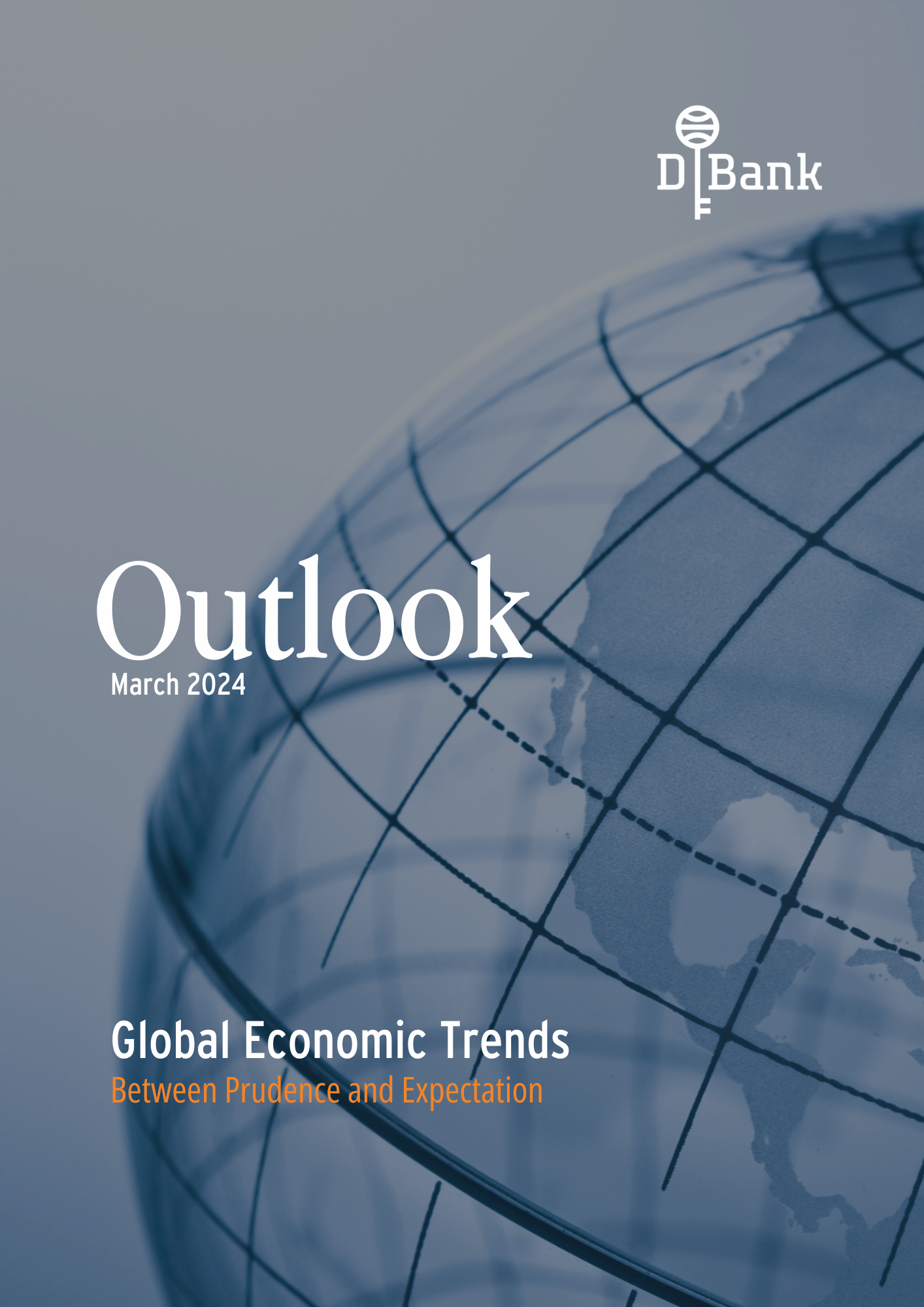
21 Feb Outlook March 2024: Global Economic Trends
DBank Outlook is a comprehensive guide that analyzes current market trends, economic indicators, and potential risks. It helps you navigate today’s dynamic financial landscape!
MACROECONOMICS: No recession in the United States in 2024 and sluggish growth in Europe
The ISM manufacturing index for February, published on March 1st, came out slightly below expectations, lower than January’s level and below the threshold of 50, raising fears of a contraction in activity. The FOMC subsequently toned down this cautious message on 20 March, revising upward its expectations for growth in gross domestic product (GDP) in 2024 from 1.4%, expected last December, to 2.1%, finally removing the specter of a recession in 2024.
The employment report (JOLTS) released on 6 March further confirmed the strength of the US labor market, which also explains why February’s seasonally adjusted monthly inflation rate remained at 0.4% (as in January), while economists were expecting a further contraction. The producer price indices (PPIs) confirmed on 14 March that inflationary pressures had not disappeared.
Despite this, the FOMC confirmed its scenario of 3 rate cuts in 2024, raising hopes of a first rate cut in June, even if this decision does not yet seem to have unanimous support due to the strength of the US economy.
On 21 March, the Swiss National Bank (SNB) surprised investors by cutting its key rate by 25 basis points to 1.5%, compared with 1.75% previously. This level had been reached in June 2023 after a cycle of monetary tightening that began in June 2022. The easing of inflationary pressure and the appreciation of the Swiss franc in real terms prompted the SNB’s decision. The SNB is also lowering its inflation forecast to 1.4% for 2024, followed by a further deceleration in 2025 and 2026, while remaining within the range the SNB has set itself [0 – 2%] to ensure price stability. The SNB also points out that economic growth measured by gross domestic product (GDP) is expected to be sluggish in the coming quarters.
At its meeting on 7 March, the European Central Bank (ECB) kept its key rates unchanged. As in December, the ECB is continuing to revise its inflation and growth forecasts downwards. Inflation is continuing to fall in the eurozone, with 2.8% in January and 2.6% in February, as confirmed on 18 March. Inflation in the eurozone for 2024, that was estimated by the ECB at 2.7% in December, was revised down to 2.3% on 7 March, mainly due to a weaker contribution from energy prices. Although inflation is falling, underlying inflation remains relatively high due to strong wage growth. ECB expects that inflation should return to its 2% target in 2025.
GDP growth in the eurozone is expected to remain sluggish in 2024 at 0.6%, leaving little room to avoid a recession. These low expectations are linked to the weakness of both domestic and foreign demand. The leading indicators for the eurozone (PMI on 21 March) for the month of March still show a dichotomy between services, which are in expansion territory and above expectations, and manufacturing, which is in contraction territory and below expectations. The ECB may cut rates for the first time in June.
Understanding the behavior of the markets and their impact on the world of investments is vital when designing your Financial Plan. We invite you to contact a DBank advisor, visit our website
THANK YOU FOR YOUR INTEREST IN OUR ARTICLE!
By downloading Outlook and submitting your contact information, you’ll join our community of informed subscribers. From now on you will receive updates and exclusive content directly in your inbox. We hope you enjoy our informative materials and that they are useful to you in your daily life. Welcome aboard!


